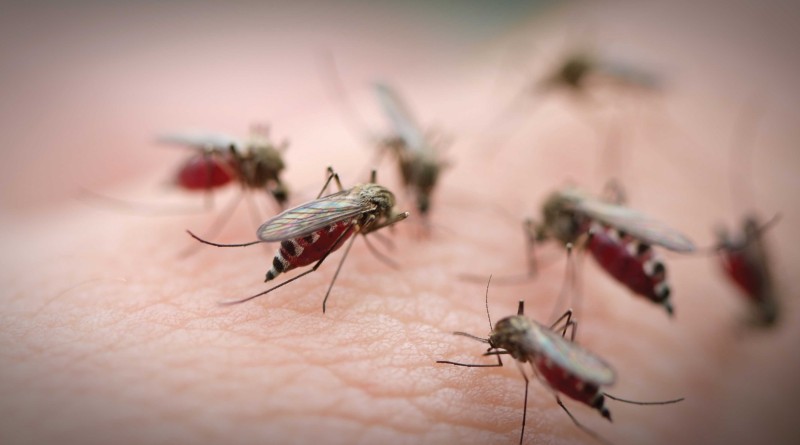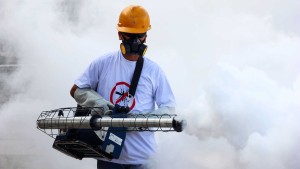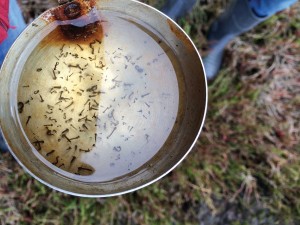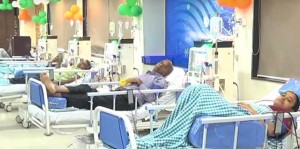Twin Terrible Threats
The dual upsurge of dengue and chikungunya in Delhi is a cause for serious concern. Double Helical takes a close look at the threats posed by these deadly ailments and the collective efforts of the government and people required to prevent them
Dr Suneela Garg/Dr Charu Kohli
The mosquito borne diseases are a major economic burden within endemic countries. In recent years, diseases have emerged as a serious public health problem in countries of South East Asia Region including India. Many of these, particularly dengue and chikungunya now occur in epidemic form almost in every part of India causing considerable suffering to people. Dengue outbreaks are common during post rainy season in India. Delhi presently is facing an acute outbreak of chikungunya affecting all age groups and areas. These diseases are preventable and it is possible to save the people from suffering and economic loss.
Burden of dengue
Dengue is endemic in 112 countries of the world. Approximately 2.5 billion people, living mainly in urban areas of tropical and subtropical regions, are at risk of acquiring dengue infection. Between 250,000 and 500,000 patients develop complications each year and it results in about 20,000 deaths each year.The first recognized dengue epidemics occurred in Asia, Africa, and North America in the 1780s. A pandemic began in Southeast Asia in the 1950s, and by 1975 it became a leading cause of death among children in the region. Dengue is prevalent throughout India in most metropolitan cities and towns. In Delhi also, major epidemics of dengue have been reported in 1967, 1970, 1982, 1996 and 2003. India reports an annual 20,474 dengue cases in different parts. The total direct annual medical cost of dengue in India is about Rs. 36,467 million. Outpatient settings treated 67% of cases representing 18% of costs, whereas 33% of cases were hospitalized, comprising 82% of costs. Unnecessary hospital admissions despite of the fact that only 1-5% of dengue cases actually need admission add to this financial burden. This year more than 27800 cases have been reported in India, out of which more than 480 cases with four deaths are from Delhi. This number tends to be low due to under reporting of cases.
Chikungunya
Chikungunya fever is an emerging mosquito borne viral disease. It was first detected in Tanzania in 1952 and has since been found in Africa, India, and other Southeast Asian countries. Since December 2005, chikungunya emerged in epidemic proportions in India and a total of 1.39 million suspected cases have been reported. The total population at risk of chikungunya infection is approximately 565.41 million in India. Till now, India has seen more than 12250 cases out of which more than 430 cases are from Delhi. The reported number of cases from Delhi are constantly increasing in past few days due to unexpected heavy rains producing a conducive environment for mosquito breeding.
Looking at the above evidence, it can be concluded that mosquito borne diseases have serious implications on health of people. They cause significant financial burden and reduced productivity for the affected population. Therefore, reduction in cases of these diseases is important to improve health status of people.
Few facts about aedes mosquito (Tiger mosquito)
• Mosquitoes are found all over the world, except Antarctica. Dengue and chikungunya are caused by aedes mosquito.
• Aedes mosquito is also called tiger mosquito due to presence of black and white stripes on its legs.
• Female mosquitoes bite humans and use the nutrients in blood to produce their eggs. When they consume blood from an individual with circulating virus, the mosquitoes in turn become infected. Through biting many humans during their lifetime, female Aedes aegypti spread diseases.
• They can bite at any time but they prefer to bite during day time. Two hours after sunrise and several hours before sunset are favorite times.
• They have adapted to complete their life cycle in diverse aquatic habitats or water found in containers, old tyres or tree holes.
• Unhatched eggs of aedes can withstand weeks to months of desiccation, remaining viable until the right conditions for hatching occur. Therefore it is important to clean desert coolers using scrub so that eggs are not left sticking to the edges.
• Breeding sites of aedes mosquito are – clean water which can be stored water for drinking, washing and bathing (uncovered overhead water tanks) in household and also rainwater collected in unused materials like coconut shells, mud pots, plastic cups, uncovered overhead tanks, tyres etc.
Clinical symptoms
Dengue and chikungunya infection can cause a spectrum of illness ranging from mild fever to high grade fever with severe headache, joint pain, muscle pain, and rash. Chikungunya is characterised by severe joint pains. Severe form of dengue called Dengue Haemorrhagic fever (DHF) can cause death. Dengue attacks selectively platelet cells of body which are responsible for clotting of blood. If platelets counts starts decreasing in dengue, it can cause bleeding from nose, in stools, within joints etc. Tests for dengue are NS-1 antigen which is positive within the first five days. Afterwards, antibody testing is done. If a person is tested positive for dengue, only paracetamol tablet is given for fever. Platelet counts are monitored. Patient should take rest and take plenty of fluids.
Danger signs of dengue – Warning signs occur 3–7 days after the first symptoms with a decrease in body temperature (below 38°C/100°F) and include: severe abdominal pain, persistent vomiting, rapid breathing, bleeding gums, fatigue, restlessness and blood in vomit. This is the time when patient should report to doctor immediately. The next 24–48 hours of the critical stage can be lethal; proper medical care is needed to avoid complications and risk of death. Sometimes panic is created due to misinformation about dengue among people. Such rumours should not be relied and there authenticity should be verified carefully.
Dengue shock syndrome-It develops around the third to seventh day of illness. Its symptoms are cold and blotchy skin, redness, rapid pulse and rapid fall in blood pressure and restlessness.
Prevention and Control
As there is no specific treatment for dengue and chikungunya, general public health measures have to be instituted for the prevention and control of mosquito borne diseases. Prevention constitutes taking steps to avoid mosquito bites and eliminating mosquito breeding sites. The use of personal protective measures like mats, bed-nets, screening, repellents, liquid vaporizers, mosquito coils etc. has been advocated as an effective tool in control of mosquito borne diseases.
• Environmental modification: Removal of natural breeding sites of mosquitoes. No garbage in which water can be collected and breeding can occur like unused tyres, coconut shells, cups, plastic bottles should be allowed in any household. This mosquito resides in cool dark corners of the house like behind curtains and almirah, under the sofa set and in kitchen in dark corners. Therefore, it is important to spray insecticide in these areas to kill the hidden mosquitoes.
• Biological Control – fishes which eat mosquito larva like Gambusiaaffinis and Poeciliareticulata can be put in ornamental ponds.
• Chemical Control – Temephos granules are used to kill larva in desert coolers or overhead tanks
• Insecticide sprays – Pyrethrum extract spray is also used in residential colonies
• Personal Protection- Long sleeves protective clothing should be worn by everybody. Mats, coils and vaporizers and other mosquito repellents should be used in house as well in workplace.Insecticide-treated mosquito nets and curtains are also good method especially for children.
Response of Government of India
Government of India has taken many efforts in control and prevention of mosquito borne diseases. The National Vector Borne Disease Control Program (NVBDCP) provides technical and operational guidelines to the state governments besides sharing costs for the control of chikungunya and dengue control in India. Early detection of cases and complete treatment, control of mosquito breeding and generating awareness among people to motivate them to take precautions are the key components of NVBDCP.
Conclusion
Dengue and Chikungunya are viral illnesses transmitted by aedes mosquito. In most of the cases, these diseases are self limiting. There is no cure and therefore prevention is best approach for their control. Immediate steps should be taken to prevent mosquito breeding and use of personal protective measures should be promoted. Collective efforts are essential for prevention and control of dengue and chikungunya. Example can be taken from our neighbouring country Sri Lanka which successfully eliminated malaria which is also a mosquito borne disease.
(The author are from Department of Community Medicine, Molana Azad Medical Collage, New Delhi)






